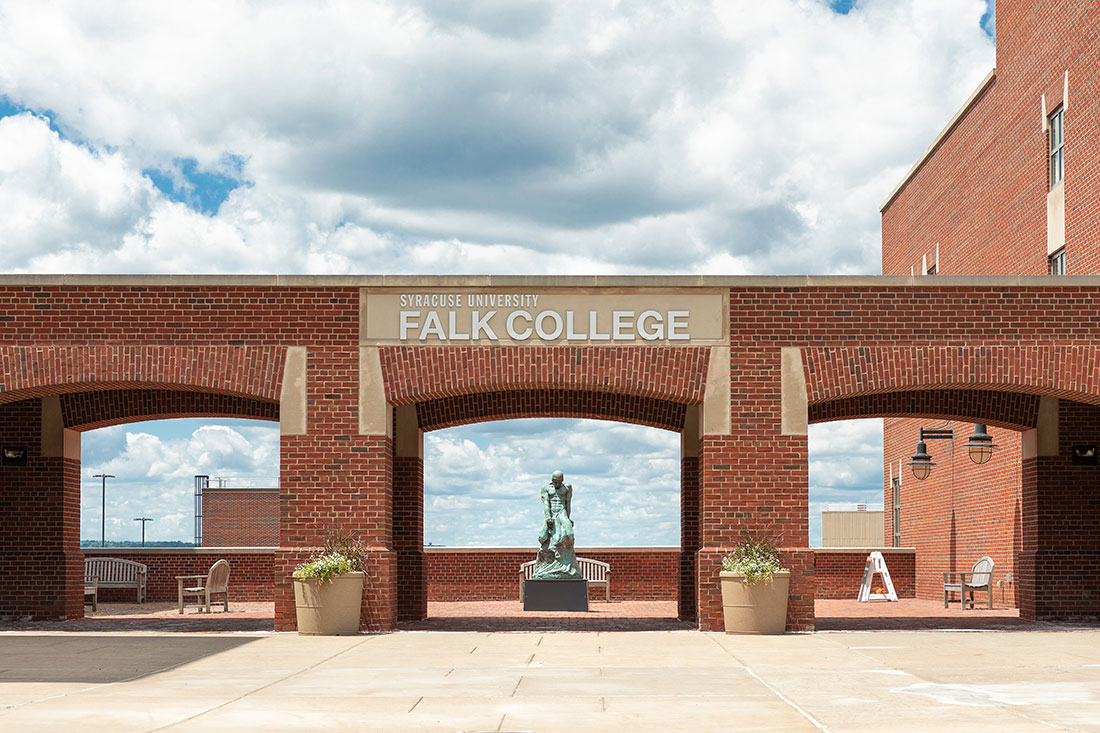
On Nov. 13, Syracuse University announced a go-forward plan to reshape the future of its human dynamics programs and reposition them for short- and long-term success. Here are frequently asked questions about the announcement:
What is the main objective of reshaping Syracuse University’s human dynamics programs?
The primary goal is to reposition and strengthen these academic programs to ensure their success and growth both in the short- and long-term. By consolidating programs and aligning them with colleges that have stronger academic synergies, Syracuse University aims to enhance the community impact, drive enrollment growth, advance research excellence, and better serve students and the broader communities in human, health, and social services.
What specific changes are being made to the human dynamics programs?
The reshaping plan involves the following key changes:
- Human Development and Family Science will merge with Marriage and Family Therapy, becoming one department (i.e., HDFS) within the College of Arts and Sciences.
- Public Health will move to the Maxwell School of Citizenship and Public Affairs.
- The School of Social Work will be housed in the School of Education.
These changes are designed to improve academic collaboration, expand research opportunities, and better align these programs with complementary academic disciplines.
When will these changes take effect?
The changes will go into effect on July 1, 2025. Students graduating through August 31, 2025, will participate in the Falk College of Sport and Human Dynamics commencement ceremonies, and students graduating after Sept. 1, 2025, will be participating in the commencement ceremonies of their new school or college. All students impacted by this transition will continue to receive their diploma from Syracuse University that includes their degree.
How were these changes determined?
These changes were based on an extensive four-month assessment conducted by the Human Dynamics Task Force, which involved input from faculty, students, alumni, and community stakeholders. The task force analyzed the current state of these disciplines, both on campus and at peer institutions, and provided recommendations, which in large part informed the go-forward plan.
Will students already enrolled in these programs be impacted by these changes?
Students currently enrolled in these programs will continue their studies as planned. Starting in Fall 2025, students enrolled in these programs will be placed within the school or college that houses their respective degree program.
Where will faculty and staff in the human dynamics programs be located after the changes?
Faculty and staff in the human dynamics programs will remain physically located in MacNaughton and White Halls–and Peck Hall for the Department of Marriage and Family Therapy–for the foreseeable future, even after the programs are realigned with other colleges.
What are the benefits of these changes for students and faculty?
For students, these changes will lead to stronger academic programs with greater interdisciplinary collaboration, enhanced research opportunities, and better preparation for future careers in human, health, and social services. For faculty, the realignment fosters stronger collaborations across colleges, supporting faculty scholarship and providing a more robust environment for research excellence.
Why is Syracuse University making these changes now?
The changes reflect Syracuse University’s commitment to adapting to the evolving educational landscape and ensuring that its human dynamics programs are positioned for long-term success. This restructuring will allow the programs to better meet the needs of students, faculty, and the communities they serve, while fostering greater academic synergies and promoting growth.
What role did the Human Dynamics Task Force play in these decisions?
The Human Dynamics Task Force, co-chaired by Falk College Associate Dean of Human Dynamics Rachel Razza and Associate Provost for Graduate Studies and Dean of the Graduate School Peter Vanable, played a central role in assessing the current state of the programs, gathering feedback from stakeholders, and formulating strategic recommendations. Their work involved cross-disciplinary collaboration and was instrumental in shaping the final plan for the realignment of these programs.
What is the long-term vision for the human dynamics programs at Syracuse University?
The long-term vision is to create stronger, more integrated programs that foster greater collaboration across disciplines and elevate the university’s impact in fields like human development, public health, marriage and family therapy, and social work. By realigning these programs with other colleges, the university aims to drive enrollment growth, enhance research, and better prepare students for professional careers in the human, health, and social services fields.
